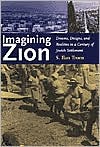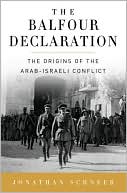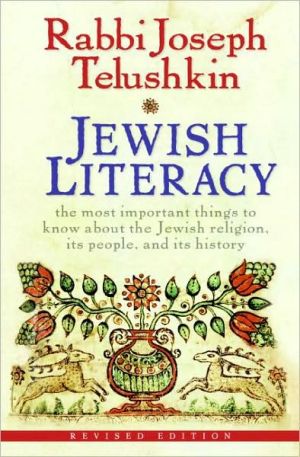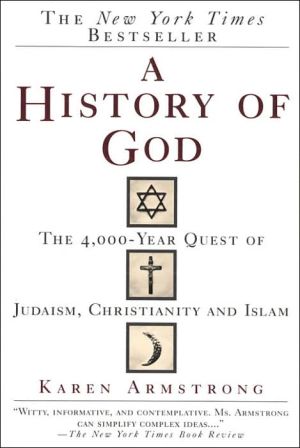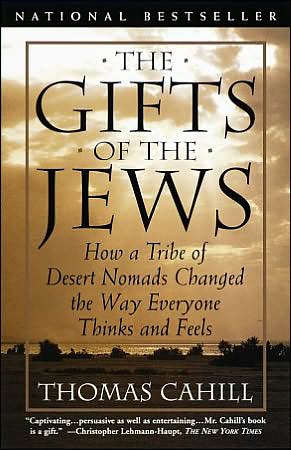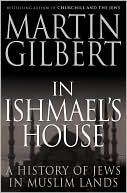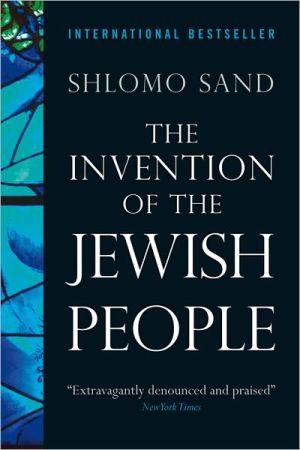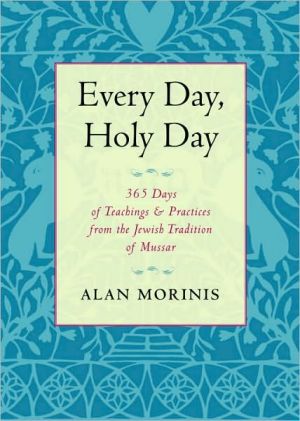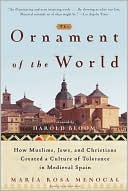Imagining Zion: Dreams, Designs, and Realities in a Century of Jewish Settlement
"This book tells the story of how Zionist colonizers planned and established nearly 700 agricultural settlements, towns, and cities from the 1880s to the present. This extraordinary activity of planners, architects, social scientists, military personnel, politicians, and settlers is inextricably linked to multiple contexts: Jewish and Zionist history, the Arab/Jewish conflict, and the diffusion of European ideas to non-European worlds." "S. Ilan Troen demonstrates how professionals and...
Search in google:
"This book tells the story of how Zionist colonizers planned and established nearly 700 agricultural settlements, towns, and cities from the 1880s to the present. This extraordinary activity of planners, architects, social scientists, military personnel, politicians, and settlers is inextricably linked to multiple contexts: Jewish and Zionist history, the Arab/Jewish conflict, and the diffusion of European ideas to non-European worlds." "S. Ilan Troen demonstrates how professionals and settlers continually innovated plans for both rural and urban frontiers in response to the competing demands of social and political ideologies and the need to achieve productivity, economic independence, and security in a hostile environment. In the 1930s, security became the primary challenge, shaping and even distorting patterns of growth." Not until the 1993 Oslo Accords, with prospects of compromise and accommodation, did planners again imagine Israel as a normal state, developing like other modern societies. Troen concludes that if Palestinian Arabs become reconciled to a Jewish state, Israel will reassign priority to the social and economic development of the country and region.
Imagining Zion \ Dreams, Designs, and Realities in a Century of Jewish Settlement \ \ By S. Ilan Troen \ Yale University Press \ Copyright © 2003 Yale University\ All right reserved.\ ISBN: 978-0-300-09483-1 \ \ \ \ \ Chapter One \ Covenantal Communities \ The stream of modern life draws the countryman to the town. To exchange the town for the country is to swim against the stream. For a people which was uprooted from its land two thousand years ago and which has become attached with every fibre of its being to town-life, for such a people to return to the soil is to swim against the current of double strength. An effort of quite unusual intensity is required to overcome the obstacles. -YITZHAK ELAZARI-VOLCANI, 1927\ From the 1880s, Jews who swam against the stream and returned to Palestine came with increasingly precise and practical conceptions of how the country could be settled. The first generation of pioneers and planners imagined a land filled with villages in imitation of the Europe they had known before emigration. They assumed that the European experience could be applied directly to changing European Jewry into a Middle Eastern peasantry. Jewish agricultural colonization did transform Palestine from a poorly developed and backward country into a land that supports hundreds of villages and boasts one of the most modern and efficient agricultural systems in the world. But this result was not achieved merely by transplanting European models. Nearly fifty years of systematic experimentation and adaptation were necessary to produce the methods by which a modern nation based on villages might be established. In the course of a process of trial and error, the economy and agricultural technology of the Zionist village were necessarily transformed. By the 1930s Zionist colonizers had begun to redesign these pastoral villages as paramilitary outposts necessary for penetrating and holding territory in a hostile countryside.\ From the 1880s until Israel was granted statehood in 1948, about 250 villages of various types were established. With recruits drawn from the massive post-Independence immigration of the 1950s and the enlarged territory and financial resources generated with statehood, 400 more settlements were founded until the Six-Day War in 1967, when agricultural colonization largely ended. Thus, in less than a century, from 1882 to 1967, Zionist colonizers established more than 650 villages.\ During the initial stage of this process, from the 1880s until the First World War, Jewish settlement was concentrated almost exclusively in the moshava, a traditional kind of colony whose members farmed their land independently. The early moshavoth (plural of moshava) failed to achieve economic independence and did not develop quickly enough to enable large-scale colonization within a reasonable time. Attempts at reform and experimentation led to the design of the kibbutz, or kvutza (collective settlements), and the moshav (cooperative farming village) just before the outbreak of the First World War.\ There were prior movements to resettle Jews in Palestine. Disciples of the Gaon of Vilna (1720-1797), a spiritual and rabbinic authority among Eastern European Jewry, constituted one of the first and certainly largest early organized migrations of European Jews. Believing that omens indicated the imminent arrival of the Messiah, they thought they could hasten Redemption if they settled in Eretz Israel, and several thousand immigrated between 1807 and 1847. In an effort to attract more Jews, they even dispatched a messenger to Yemen to encourage the ingathering of that remote community. Their preferred locations for settlement were Jerusalem and Safed, where they established institutions for study and worship, most notably the Hurva synagogue in the Old City of Jerusalem. They looked forward to the year 1840 (5600 in the traditional Jewish reckoning), when it was widely predicted that the Messiah would come. His failure to appear at the appointed time caused great frustration and led them to abandon the belief that by taking action "from below," Jews could ensure and even hasten Redemption. The disappointed disciples of the Gaon retreated into the ideology of "If God does not build the house, its builders labor in vain."\ Other Jews took personal responsibility for "rebuilding ruins" and called for an "awakening from below," including the establishment of productive farming colonies. Perhaps the best known was Moses Montefiore, the English philanthropist, who in 1855 contributed funds for moving Jews out of Jerusalem to become farmers. In 1870, the French-Jewish philanthropic organization, the Alliance Israe´lite Universelle, established Mikve Israel outside of Jaffa as a training farm for Jews whom they hoped would work the land. In 1878, a group of largely Jerusalem-based Hungarian Jews established a colony on the coastal plain that soon disbanded. Not until 1882 did a sustained movement of rural Jewish settlement begin. In that year recent arrivals founded Petach Tikva, Rishon le-Zion, and Zichron Ya'acov along the coast and Rosh Pina at the base of the Upper Galilee. A year later, settlers established Ness Ziona in the coastal plain and Y'sod Hama'ala in the north, followed in 1884 by Gedera in the south. By the outbreak of the First World War, approximately 12,000 Jews were living in some 30 moshavoth. They understood themselves as engaged in a new departure that would change the character of Jewish society in Eretz Israel from an object of charity to a thriving, independent community and thereby begin a new page in Jewish history. They viewed themselves as pioneers of a new Jewish society rooted in the ancient homeland.\ Yet for all their differences, colonists who undertook to cultivate a barren land shared significant similarities with settlers who established themselves in "holy cities" to await the Messiah. Neither disciples nor pioneers saw themselves as individual pioneers on a frontier. Both sought to live within a communal framework. Most founders of moshavoth were traditional Jews, although they did not choose to live under an uncompromising regime supervised by religious authorities. Moreover, although pioneers who settled in moshavoth, unlike their religious counterparts in the cities, sought and anticipated ultimate economic independence, they also assumed that they would require significant temporary financial support from sponsors abroad. Thus, Zionist villages were conceived as communities, rooted in a common religious tradition and dependent on external support.\ Covenantal Traditions\ The founding and the travails of the moshavoth have been documented often and well. The salient issue in the present discussion is the intention of the founders to create communities or, to borrow a relevant phrase from the Puritan experience in the seventeenth and eighteenth centuries, "miniature commonwealths." The source of this communitarianism has usually been traced to various streams of European cooperative, socialist, or communist ideologies. However, upon closer examination, the covenants of the moshavoth suggest that Zionist communal thought was rooted in the religious experience, imaginations, and predilections of early planners and pioneers, and that their colonies recreated traditional patterns of bonding along national and/or religious lines. By the First World War, the collective imperative was secularized, and it transcended regnant ideologies from socialism on the left to free-enterprise capitalism. Still, it is noteworthy that Zionist colonizers from all ideological perspectives built villages rather than latifundia, plantations, ranches, or homesteads.\ The communitarian and religious roots of this phenomenon prefigure the moshava. At the beginning of the nineteenth century there were about 3 million Jews in the world, and only 5,000, most of whom were Sephardim, or Oriental Jews, lived in Palestine. Thereafter, Ashkenazim, or European Jews, began to arrive in steady if small numbers, contributing significantly to the growth of Jewish communities in the "holy cities" of Safed, Tiberias, Hebron, and, above all, Jerusalem. By 1880, the Jewish population had increased about fivefold to perhaps 24,000 as a result of emigration from Eastern Europe. But these new arrivals did not cultivate the land. Many neighborhoods and housing estates were established as the city expanded westward from the ancient core. Individual homes were rare. Nearly 90 percent of all building was constructed by or for Jews who organized themselves according to a communal contract with specific regulations and rules. They joined or created kollelim, religious communities devoted to the study of Torah and committed to a rigorous adherence to religious law and custom. Coreligionists abroad supported them and their institutions through an extensive charity network. These early neighborhoods provided considerable local experience in community-building. Some of the founders of the first moshavoth were themselves involved in the organization of Jerusalem's new housing estates and were members of them. The Jerusalem experience followed a pattern common to Jewish community-building across the centuries and throughout the Diaspora. They easily and naturally transplanted deeply rooted practices to nineteenth-century Palestine.\ The moshava's founding covenants (brithoth, or brith in the singular) and regulations (takanoth) provide a clear statement of the intentions of both planners and pioneers. The ubiquity of these documents testifies to their significance. One major collection of covenants and regulations is contained in seven substantial volumes. Together and individually they reflect the aspirations and intentions of Jews from the small towns and cities of Eastern and Western Europe as well as those who emigrated from them to America and Palestine.\ The fundamental purposes put forward in these documents and the plans for their realization are remarkably similar. It is as if a recognized and agreed archetype for community design had emerged without the deliberations and formal adoption of an international association. There was no single planner, group of planners, or planning authority in this initial stage of Zionist colonization. Not until 1897, when Theodor Herzl organized the first Zionist Congress and established the World Zionist Organization, did an international Zionist authority undertake to coordinate and implement a coherent policy of colonization. There were attempts that anticipate the work of the WZO including regional conferences of the Hovevei Zion (Lovers of Zion) and the efforts of individuals, notably Baron Edmund de Rothschild of France. But in the first generation, Zion was planned according to a common blueprint that reflected the aspirations of a multitude of Jews.\ Covenantal Societies: Social Ideals\ Individuals became members of a community in Palestine by entering into contracts replete with largely standardized bylaws, or takanoth. These documents affirmed social and religious bonds among the members. Social ties were paramount, while economic distinctions were blurred, so that bylaws typically made no distinctions between poor and rich. The crucial marker was the differentiation of Jews on the basis of country of origin or religious practice. There were, for example, separate neighborhoods of Jews from Bukhara in Asia and from Hungary in Europe. Community members adhered to the teachings of a particular rabbi or religious movement such as a Hasidic sect. The takanoth ensured that neighborhoods and housing would be societies of likeminded people dedicated to the same purposes. Like the miniature commonwealths of New England-which were also framed by covenants-the early settlements in Palestine were exclusive societies with democratic elements only for those permitted to join.\ Like the Puritans, who understood themselves as latter-day Israelites, the Zionists, too, framed their compacts, covenants, and founding documents with Biblical precedents as they returned to their Promised Land. The takanoth resonate with biblical imagery, often echoing the experience of the Patriarchs. Many explicitly use the word "brith" (covenant), a term that appears frequently in the documents of colonizing societies in Eastern and Central Europe during the last two decades of the nineteenth century. Whether in the masthead, the opening statement, or a specific article identifying the purpose of the proposed society, covenants usually employ quotations from the Bible foretelling the time when Jews will take their destiny in their own hands and reclaim the land from which they have been exiled.\ When Me'a She'arim was constructed beyond the walls of the Old City of Jerusalem (1874), the takanoth quoted Isaiah to address problems of urban overcrowding: "Enlarge the site of thy tents, and let them stretch forth the curtains of thy dwellings; spare not, lengthen thy cords, and strengthen thy stakes" (Isaiah 54:2). Pioneers who ventured beyond the city walls to work the land and those who supported them found inspiration in other verses. The society organized to establish Ness Ziona invoked Ezekiel (36:8, 24): "But ye, O Mountains of Israel, ye shall shoot forth your branches, and yield your fruit to My people Israel, for they are at hand to come." Redeeming the land through the toil of the pioneers is the dominant motif of the bylaws of the rural moshava.\ The Bible also provided founders of the moshavoth with a call for collective action. The organizers of Rehovoth (1890) begin their founding document, The Book of the Covenant of Menuchah ve-Nachalah (Rest and inheritance), with a quotation from Isaiah (65:21-22):\ And they shall build houses, and inhabit them; And they shall plant vineyards, and eat the fruit of them. They shall not build, and another inhabit, They shall not plant, and another eat; For as the days of a tree shall be the days of My people.\ The society of Hovevei Zion in Warsaw, in September 1883, rallies its members with a call for self-help, also from Isaiah (63:5):\ In the name of G-D who dwells in Zion! And I looked and there was none to help, And I beheld in astonishment, and there was none to uphold; Therefore, Mine own arm brought salvation unto Me.\ This Warsaw constitution, framed in the aftermath of an outbreak of particularly violent pogroms, demands a solution to imminent national calamity. The Jews must save themselves by joining forces in rebuilding their national homeland as workers of the land in Zion. Their urgent call to action, too, is cast in the language of ancient prophecy: "Living in the city of Warsaw we have seen the signs of the present time, the burning sword of hatred, that is turning over today in human society. We have observed the plight of our people and its ruin. We are totally frustrated with the position of the nation ... and we shall listen to the voice of God from the voices of the torches that are so powerfully calling the children of the scattered and separated people saying: 'gather together children of Jacob, understand the matter and understand what you see!'"\ The recourse to Biblical motifs is consistent with the traditional religious orientation of the early colonists and their supporters. Bylaws made provisions for the employment of a rabbi and a teacher for religious instruction as well as literacy training; a ritual slaughterer who would be able to provide the colonists with kosher meat; the construction of a communal ritual bath, a synagogue, and a house of study.\ Many covenants correctly refer to the intended colony as a "kehillah kedoshah," or a "holy community." Adherents of traditional religious culture could not otherwise imagine life in the Holy Land, or perhaps anywhere. In Judaism, there are commandments that can only be fulfilled and even prayers that may only be uttered within communities. By tradition and religious law, group worship offers greater possibilities than does individual prayer. Moreover, most institutions essential to the conduct of Jewish life require communities. It was therefore natural to envision themselves and their coreligionists in Palestine as members of communities rather than individuals venturing forth in pursuit of personal objectives.\ (Continues...)\ \ \ \ \ Excerpted from Imagining Zion by S. Ilan Troen Copyright © 2003 by Yale University. Excerpted by permission.\ All rights reserved. No part of this excerpt may be reproduced or reprinted without permission in writing from the publisher.\ Excerpts are provided by Dial-A-Book Inc. solely for the personal use of visitors to this web site. \ \
AcknowledgmentsIntroductionPt. IThe Zionist VillageCh. 1Covenantal Communities3Ch. 2Trial and Error in the Village Economy15Ch. 3The Economic Basis for Arab/Jewish Accomodation42Ch. 4The Village as Military Outpost62Pt. IIUrban ZionCh. 5Tel Aviv: Vienna on the Mediterranean85Ch. 6Urban Alternatives: Modern Metropolis, Company Town, and Garden City112Ch. 7"Imagined Communities": The Zionist Variation141Pt. IIIPost-Independence Opportunities and NecessitiesCh. 8The Science and Politics of National Development163Ch. 9From New Towns to Development Towns184Ch. 10Israeli Villages: Transforming the Countryside208Ch. 11Establishing a Capital: Jerusalem, 1948-1967233Ch. 12Contested Metropolis: Jerusalem After the 1967 War259Epilogue: Israel into the Twenty-First Century281Notes293Index325
